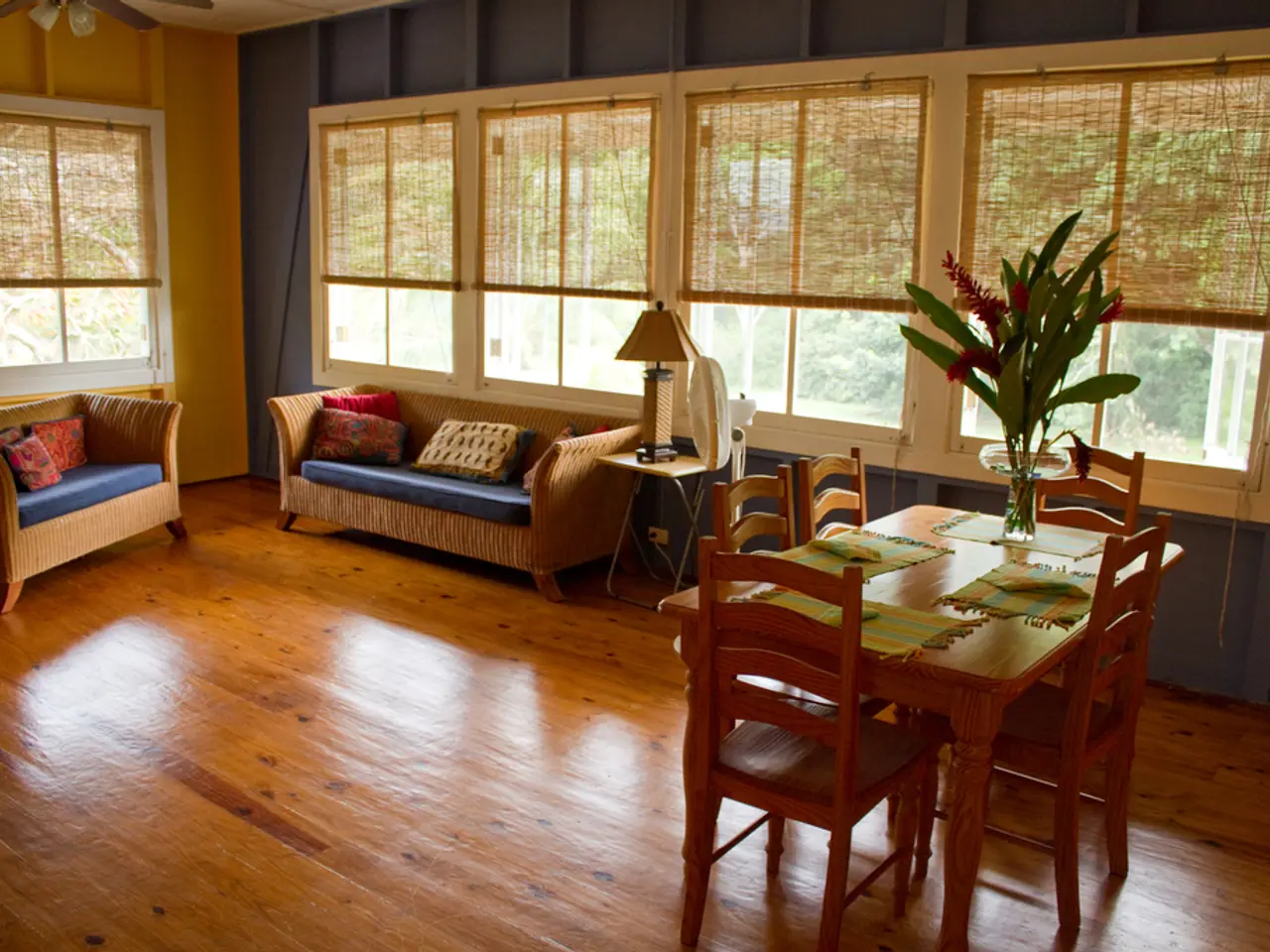Redesigning Environments through Artificial Intelligence Technology
AI tools are transforming the world of interior design, offering homeowners and professionals an intuitive, interactive, and personalized design experience. These cutting-edge platforms analyze vast databases of design elements, color palettes, furniture styles, and spatial relationships to generate tailored design solutions based on user preferences.
The future of AI in interior design is promising, with the integration of virtual and augmented reality technologies for exploring designed spaces, smart home integration, and machine learning algorithms that understand individual preferences over time. The market for AI interior design tools has significantly grown, with platforms like Roomvo and Modsy offering visualization tools for different paint colors, furniture, and 3D renderings.
Professional interior designers are leveraging AI to streamline conceptualization, show clients visualizations of proposed changes, and optimize space planning. AI is proving invaluable for space planning, suggesting optimal furniture arrangements based on factors like natural light, traffic flow, and functional requirements.
One example of AI's impact is PaintIt AI, which generates professional-quality mockups quickly, integrates actual furniture shopping recommendations with cost calculations, and supports project organization and client collaboration—effectively bridging design inspiration with actionable plans. Other tools like VirtualStaging AI allow real estate professionals and homeowners to digitally furnish empty or outdated spaces, saving time and cost while enhancing property appeal.
Foyr’s AI interior design generator enhances textures, lighting, materials, and spatial flow automatically, enabling seamless style swaps and polished finishes ideal for presentations or renovations. The use of AI in interior design is increasingly cloud-based and powered by large generative models, democratizing access to professional-level design and empowering users to customize their environments efficiently and creatively.
However, privacy and data security are concerns with AI tools, as they often require detailed information about users' homes and preferences. AI color palette generators can suggest harmonious color schemes based on existing elements in a space, while AI-powered mood board generators help designers explore different aesthetic directions with clients more efficiently.
AI can rapidly generate themed design concepts that feel both fresh and appropriate for specific times of year, such as fall home decor collections and holiday inspiration posts. The benefits of incorporating AI into interior design include speed, cost-effectiveness, and democratizing good design, making beautiful, well-planned interiors more accessible than ever before.
Despite these advancements, AI struggles with highly personal or emotional aspects of design, such as family dynamics or personal memories. The integration of AI into interior design represents a fundamental shift, offering homeowners access to professional-quality design tools and inspiration, while freeing up time for professional designers to focus on the uniquely human aspects of design.
Arlington Avenue Design is an example of a design firm that uses AI to generate sophisticated, cohesive interior concepts, serving as a starting point for deeper exploration and allowing them to push creative boundaries while ensuring each design remains practical and personally meaningful for their clients. Arlington Avenue Interiors is a design blog that exemplifies how modern design practices are embracing AI technology, using it to explore diverse aesthetic possibilities while maintaining a consistent design philosophy.
The risk of homogenization in design trends exists as AI tools become more widespread, but successful designers use AI as a starting point and layer personal insight and customization onto AI-generated foundations. Virtual staging in real estate has become popular, using AI to furnish empty properties in a way that appeals to potential buyers, demonstrating AI's understanding of market psychology.
In conclusion, AI is revolutionizing interior design by providing both professionals and homeowners with easy-to-use platforms that generate personalized, photorealistic room layouts, furniture recommendations, and décor ideas based on style preferences and photos of actual spaces. These tools combine intelligent spatial planning, realistic rendering, and often real-time or VR features to streamline the design process, enhance creativity, and reduce guesswork.
AI technologies are transforming the home-and-garden sector, as AI-powered tools like Roomvo and Modsy offer visualization features for different paint colors, furniture, and 3D renderings in home design. The future of AI also includes technology advancements in virtual and augmented reality, smart home integration, and machine learning algorithms that learn individual preferences over time.
Professional interior designers are using AI to streamline projects by suggesting optimal furniture arrangements based on factors like natural light, traffic flow, and functional requirements, while tools like PaintIt AI generate professional-quality mockups, offer furniture shopping recommendations, and support project organization and client collaboration.




